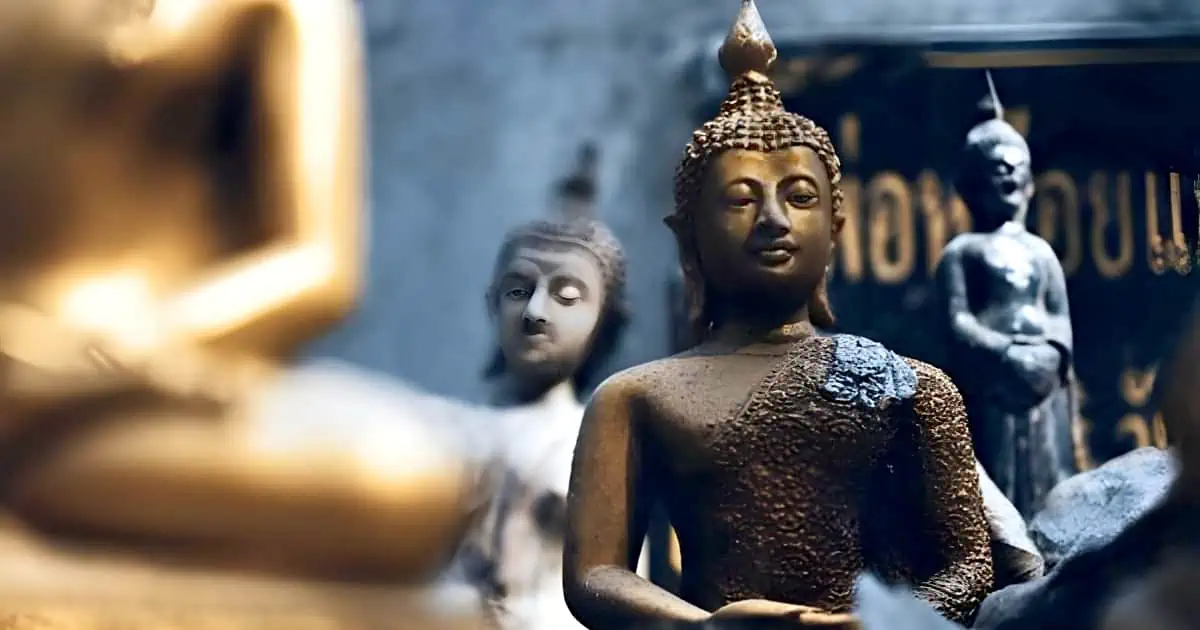Having been in the yoga world for more than two decades, I’ve noticed a correlation between the number of people who practice yoga who are also familiar with some form of Buddhism, like Zen meditation.
Although the origins of yoga trace back to Hinduism, there is an undeniable connection between yoga’s spiritual and physical practice and Buddhism. After all, Buddha himself is the model of yogic meditation, often seen sitting in the famous Lotus posture.
So, where do yoga and Buddhism intersect? Have you ever wondered if Buddhism and yogic practice are similar? This blend of traditions sparks a growing curiosity among yogis in the West.
Buddhist yoga and meditation blend the pursuit of enlightenment with physical asanas and mindfulness practice, a synthesis that has captivated many people who practice yoga today.
Let’s explore these two systems of philosophy and delve into the nature and differences of philosophy toward inner peace through meditation and asanas.
Contents
- 1 Philosophical Foundations of Yoga and Buddhism
- 2 Historical Ties Between Yogic and Buddhist Traditions
- 3 Defining Buddhist Yoga and Its Practices
- 4 Dynamic Mindfulness in Buddhist Yoga
- 5 The Body in Buddhism and Yoga Perspectives
- 6 Body Concept Misinterpretation
- 7 The Evolution of Yoga and Its Intersection with Buddhism
- 8 Modern Yoga’s Reception and Diverse Traditions
- 9 Approaching Meditation Through Buddhism and Yoga
- 10 Conclusion
Philosophical Foundations of Yoga and Buddhism
Yoga is deeply rooted in Hinduism and shares philosophical ties with Buddhism through the advaita vedanta school of thought. Advaita and Buddhism each emphasize the non-dual nature of reality; there is no separation between one’s true self and ultimate reality.
Similarly, Buddhism and yoga explore the nature of existence through meditation, concepts like dharma, karma, and non-attachment philosophy. Classical yoga practice and Buddhism share the goal of spiritual liberation: yoga through movement and Buddhism through meditation mind work.
Buddhist principles again overlap with aspects of yoga philosophy regarding suffering as an inevitable state of human experience. Luckily, both the Yoga Sutras and Buddhism offer solutions and tools for moving beyond suffering and into self-realization.
These enduring yoga traditions and yoga practices share elements with Buddhism, although there are also critical differences in philosophy.
Dharma’s Significance
Dharma is a significant concept in yoga, Buddhism, and Hinduism, particularly within the philosophies of Vedanta and Advaita, as expounded in the Upanishads. It’s about living righteously and fulfilling your moral duty.
In yoga philosophy, it means following your life’s purpose. Hinduism followers see it as living according to the teachings of Vedanta and yoga philosophy, much like Buddhists view it through the Yoga Sutras and Buddha’s teachings.
Suffering as a Start
Life’s tough, no joke there. Suffering, or Dukkha in yoga philosophy, is where many begin their spiritual quest, often exploring the Samkhya tradition and studying the Yoga Sutras, leading to a practice of meditation.
Yoga uses this discomfort to push for self-improvement. Buddhism, similar to the yoga philosophy found in the yoga sutras, starts here, too, saying life’s suffering, when approached with meditation and Vedantic principles, can lead to enlightenment.
Non-Attachment Pillar
Letting go is key in both traditions. Non-attachment helps yogis stay calm in chaos. For Buddhists, it’s about ditching desires that cause pain.
Historical Ties Between Yogic and Buddhist Traditions
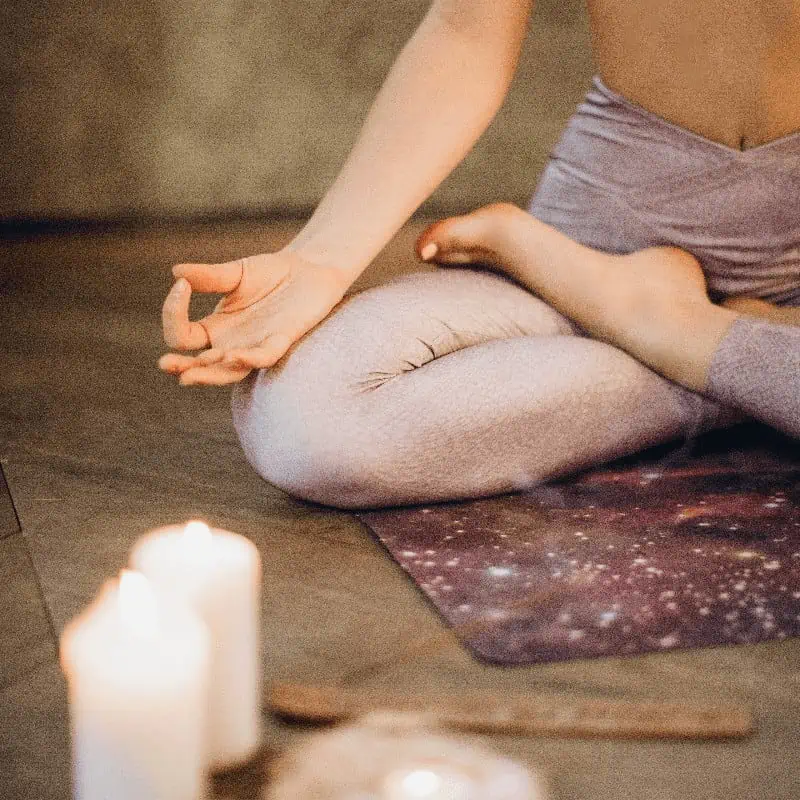
Yoga and Buddhism share deep historical roots. India’s ancient ascetic practices shaped both.
Ancient Indian Influences
The spiritual soil of ancient India and the Vedanta philosophy of Hinduism nurtured both Buddhist and yogic traditions. Buddhism and the Samkhya school of Hindu philosophy have origins dating back to India’s 4th or 5th century BCE.
Ascetics seeking enlightenment cultivated discipline in their practices, similar to some yoga traditions like the dedicated devotion of Bhakti Yoga or Raja Yoga, which focuses on the yoga sutras and meditation.
Buddhist yoga is a testament to centuries of spiritual development, reflecting origins in different traditions and evolution through texts like the Upanishads, Yoga Sutras, and Mahabharata.
Buddha’s Yogic Journey
Before becoming the Buddha, Siddhartha Gautama was a yogi. His quest for truth led him through rigorous yogic training, exploring the Yoga Sutras and Upanishads and deepening his practice with Samkhya philosophy and meditation.
Syncretism in Monastic Life
Buddhist monasteries and yogic communities often shared space — and ideas. Syncretism is the fusion of different traditions, belief systems, or schools of thought. Over centuries, this early syncretism forged strong bonds between the traditions of the Upanishads, the Yoga Sutras, and Buddhism.
Defining Buddhist Yoga and Its Practices
Buddhist yoga merges meditation with physical movements. Mindfulness is its core.
Meditation Meets Movement
Buddhist yoga isn’t only about your body. It’s an exercise for your mind. Zen meditation practices involve breath awareness, similar to mindfulness meditation, which we commonly use in a yoga class.
At the end of a Zen session, practitioners rise and walk gently around the room with focused breath control to gradually emerge from their meditative state. In classical yoga, each pose is paired with deep breathing practices and a focus on the present moment, akin to a standing, moving meditation.
Mindfulness in Motion
Imagine walking but being aware of every step, breath, and breeze — mindfulness in action, attuning your body to the present moment.
Now, apply that to yoga. With each movement, you are aware of every muscle in your body and every thought that arises. You practice Buddhist yoga when you move through your asana practice with this mindful awareness.
The Eightfold Path Guide
The Eightfold Path, derived from the Yoga Sutras, is practical advice rooted in ancient traditions and texts for living well through specific practices. It guides you to adopt practices that encourage the right thought, ethical living (dharma), and right action (karma).
You’ll find the same model in the Noble Eightfold Path in Buddhism. These systems are pretty similar, although they emphasize different practices. Each aims to offer a path for every individual, from suffering to eventual self-realization.
Each Eightfold Path — in the Yoga Sutras and Buddhism — teaches valuable principles, like cultivating compassion and other traditions you can practice on and off your yoga mat.
Dynamic Mindfulness in Buddhist Yoga

Buddhist yoga blends movement with sharp mental focus. Meditation doesn’t have to be a process of emptying your mind. Instead, use it to concentrate intently on certain aspects of your yoga practice, like breath control or the process of moving from one asana to the next.
Cultivating Awareness
I like to tell my students that yoga is a process of meeting yourself exactly where you are, moment to moment. In essence, that’s what Buddhism is all about — present-moment awareness.
In Buddhist yoga practice, every move you make is a chance to strengthen the development of your awareness. We still use these ancient techniques from the 5th century BCE — they are effective and needed more today than ever!
Breath as an Anchor
In yogic practice, breath control is essential. Your breath keeps you glued to the now. Each inhale and exhale in your yoga practice is like a lighthouse guiding boats through the murky waters of reality — keeping your attention from crashing into daydreams or worries.
Watching Mental Patterns
Have you ever noticed how your thoughts love playing tag? In the 21st-century practices of Buddhist yoga, you’re “it,” trying to tag each one. The game? Spotting what pops into your head during yoga practices without getting swept away by the story of the century.
To try some thought or breath awareness mindfulness practices, head to Headspace.com and check out their numerous guided meditations.
The Body in Buddhism and Yoga Perspectives
In Buddhist yoga practices, the body is more than flesh and bones; it’s a vessel for enlightenment in the 21st century. Respecting its limits is vital to spiritual growth.
Body as Enlightenment Vehicle
Buddhist yoga, a practice with centuries-old roots, sees the body as a crucial element on the path to enlightenment. It’s not just about being fit or healthy.
Instead, think of your body like a car for your mind—it needs to be cared for with practices like yoga to get you where you want to go, in this case, the state of total awareness and peace.
Mindful Acceptance
Understanding our physical boundaries isn’t about giving up. It’s about getting honest with our yoga practice and working within those lines. When your muscles scream during a challenging yoga pose, it’s not defeat; it’s wisdom whispering to take it easy.
Postures for Meditation Preparation
Yoga postures (asanas) are like pre-game stretches for meditation exercise —they prepare your mind for deep concentration. By moving through these asanas, you’re setting up the dominoes so that everything falls into place just right when you meditate after your yoga session.
Body Concept Misinterpretation
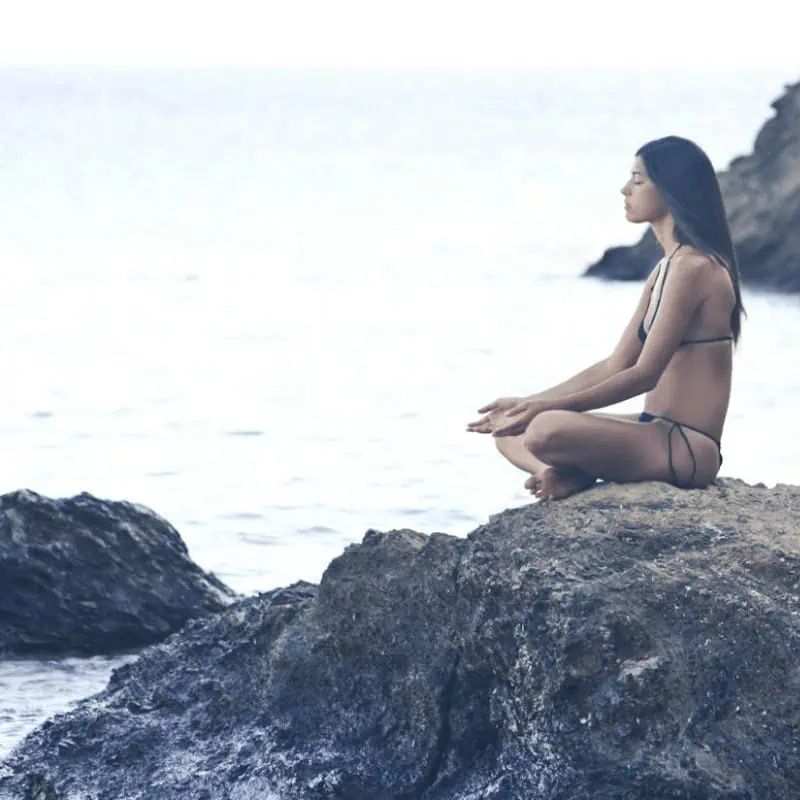
Buddhism doesn’t label our bodies as inherently impure. On the contrary, our individual fixations can trip us up on the path to spiritual liberation.
A Pure Body
In some religions, people believe the body must be purified for salvation to occur. Buddhism, however, views humans as inherently perfect beings within the body’s vessel. A temptation in yoga asana may arise to cling to our bodies’ physical form, impeding spiritual growth.
Instead, consider your body as a vehicle for your yoga practice – it’s not bad in itself, but if you’re obsessed with having the flashiest yoga poses and can’t stop showing off, you might forget the true purpose of your yoga journey.
Attachment Hinders Progress
Practicing yoga teaches us that getting too attached to how we look or feel during asanas can drag us down. It’s like being stuck in quicksand; the more you obsess over your looks, the deeper you sink away from your inner peace and the essence of your yoga practice.
In both Buddhist yoga and traditional teachings, they say this attachment is a major no-no because it keeps us from reaching our true potential.
Cultural vs Doctrinal Views
There’s a ton of cultural fluff out there mixing up what Buddhism says about our bodies and the practice of yoga. Some folks think certain practices like yoga or beliefs are straight from Buddha himself when they’re just local customs dressed up in spiritual clothes.
Buddhist and yoga traditions complement one another and even overlap in some aspects. However, each system has its own philosophy, practices, and traditions. The most crucial distinction is that Buddhism and Hinduism are world religions, whereas yoga is a philosophy.
The Evolution of Yoga and Its Intersection with Buddhism
Yoga’s journey has been long, from ancient Vedic roots to the modern-day. It’s a tale of cultural mingling and spiritual evolution, where Buddhism and yoga have played a key role.
Yoga’s Ancient Roots
Yoga dates back thousands of years. Yoga started during the BCE era as a diverse set of practices.
Buddhist Influence
By the first millennium CE, Buddhism began shaping yoga. Ideas like karma influenced yogic philosophy.
Cultural Exchange
The word “yoga” took on new meanings through cross-cultural interactions. Hinduism and Buddhism both contributed to this blend.
Modern Yoga’s Reception and Diverse Traditions
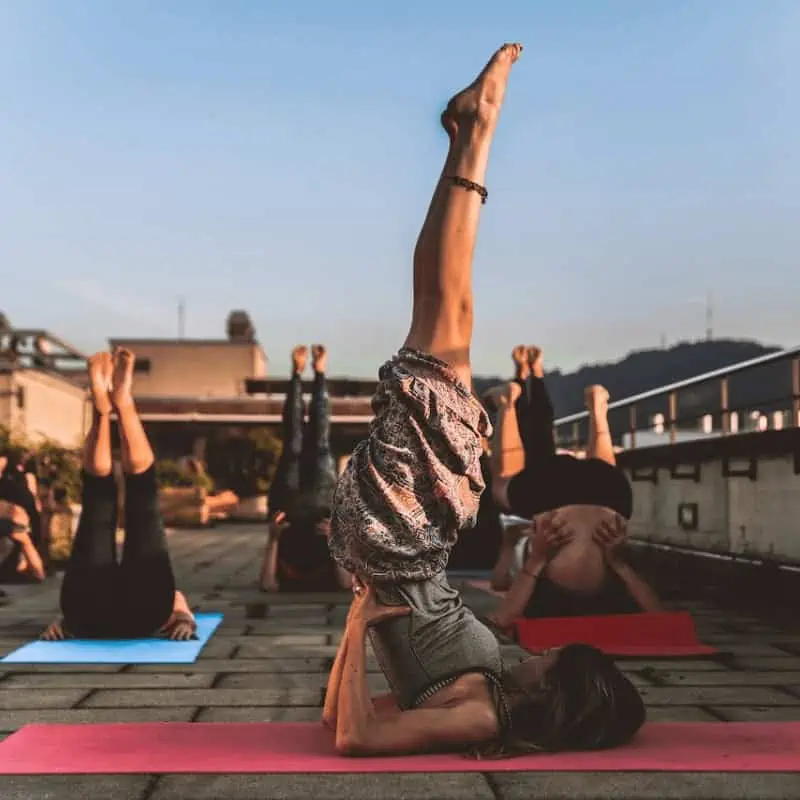
Yoga has spread worldwide, with diverse traditions emerging. The global adoption of yoga, specifically in the West, contrasts with its Asian origins, sparking debates on authenticity.
Global Adoption Rates
Yoga has truly gone global. You’ll find folks flowing into yoga asanas from bustling cities to quiet towns. With the development of yoga’s physical practice throughout the world, other schools of thought, like Buddhism, also made their way West.
Traditional vs. Modern
In Asia, yoga often comes with a side of spirituality. Practicing yoga is like your morning coffee paired with a soul-stirring sunrise—both essential for starting the day right. Buddhist yoga is part of this rich tradition, where meditation and mindfulness are as important as nailing that warrior pose.
In the West, many people adopt yoga as exercise and come to spiritual practices later. This is where the fusion of Buddhist yoga helps introduce a spiritual connection and meditation practices.
Aligning With Buddhism
Many modern yogis keep close to the roots of Buddhism — compassion and karma. They honor ancient practices while sporting the latest eco-friendly yoga mats. These branches keep the essence of classical yoga alive in today’s fast-paced world.
Blended Practices Debate
The yoga world isn’t shy about stirring the pot, either. Some purists believe in sticking strictly to the yoga tradition. Others prefer to sprinkle in some creativity. And why not? Blending different traditions is beautiful and may help draw even more people to begin practicing yoga or meditation.
Approaching Meditation Through Buddhism and Yoga
Buddhist yoga blends mindfulness and concentration. Mindfulness, or Vipassana, is about being present. Concentration, or Samatha, sharpens the mind’s focus.
Yoga Supports Depth
Yoga practices enhance meditation with proper posture. Aligned asanas make prolonged sitting a breeze. In Buddhist Zen meditation, the traditional posture to use is Lotus Pose, or a supported kneeling position.
Mantra Use
Mantras bridge Buddhist and yogic practices. The words and language may differ, yet they share the same goals of applied concentration, devotion, and spiritual liberation.
Philosophy Enriches Practice
Buddhist philosophy deepens contemporary yoga techniques. It adds layers of meaning to each yoga class.
Personal Exploration Encouraged
Dive into this integrated path yourself. Discover personal inner peace and understanding through regular practice.
Future Directions Reflected
The fusion of Buddhism and yoga is evolving. Monasteries and retreats are incubators for growth.
Conclusion
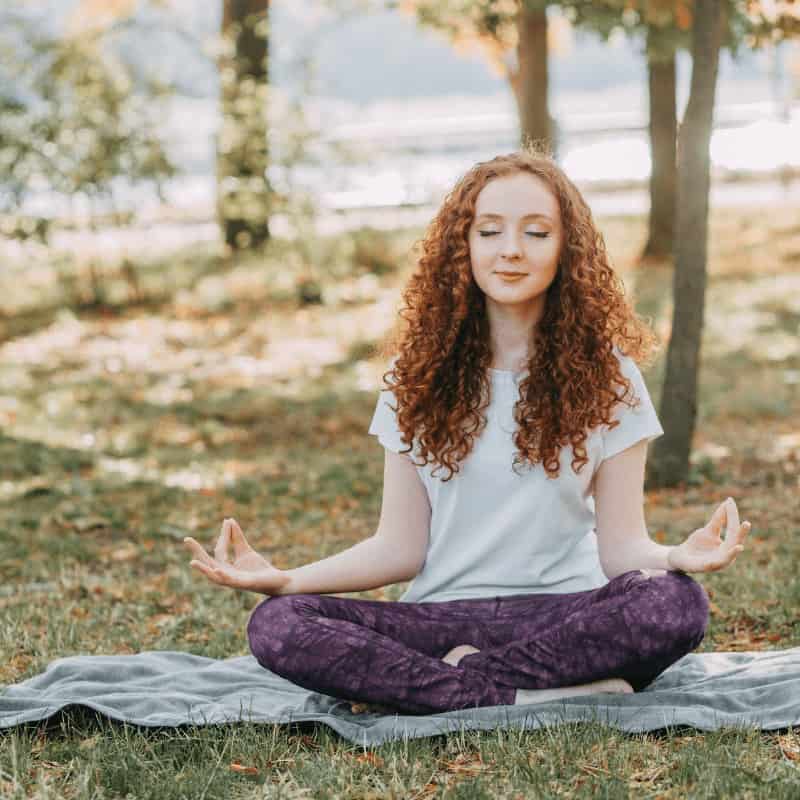
In blending ancient traditions, Buddhist yoga stands out, weaving together the threads of mindfulness and physical discipline. We’ve journeyed from the roots of yoga, where philosophy meets practice, to modern interpretations that stretch across cultures.
You’ve seen how dynamic yoga mindfulness shapes the body-mind connection and why misconceptions about purity in yoga can trip us up. It’s clear now that Buddhist yoga isn’t just exercise but a path to inner peace.
So, what’s your next move? Dive deeper into this transformative practice! Whether you’re a seasoned yogi or new to the mat, let Buddhist yoga challenge and change you. Try some online yoga at Yoga Download and check out some of their yoga and meditation classes.
Roll out your yoga mat, take a deep breath, and step into a world where every yoga asana is a meditation and every breath is a step toward enlightenment. Get ready to bend not just your body but your perceptions as well.
FAQs
What is Buddhist yoga?
Buddhist yoga is a practice that integrates traditional Buddhist philosophy with physical postures (asanas) and breathing exercises to enhance mindfulness and spiritual development.
Can anyone practice Buddhist yoga?
Absolutely! You can practice Buddhist yoga to cultivate mindfulness, compassion, and inner peace regardless of your background or beliefs.
How does Buddhist yoga differ from other types of yoga?
Buddhist yoga focuses more on meditation and the mind’s role in suffering and liberation, while other types of yoga may emphasize physical fitness or flexibility.
Do I need to be a Buddhist to benefit from Buddhist yoga?
Not at all. The principles of mindfulness and awareness in Buddhist yoga are universal and can benefit anyone looking to improve their mental clarity and emotional well-being.
What should I expect in a typical Buddhist yoga session?
Expect a blend of meditation, chanting, yogic breath work, and gentle yoga postures to harmonize body and mind.
How often should I practice Buddhist yoga for the best results?
Consistency is key. Even if brief, regular daily yoga practice is better than occasional long yoga sessions. Start with what fits your schedule and grow from there.


